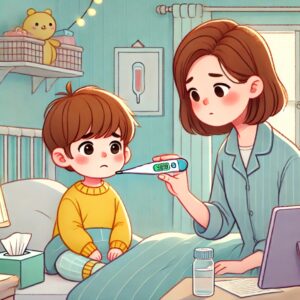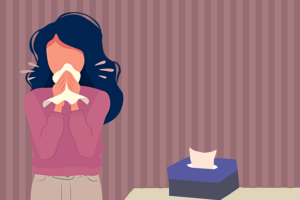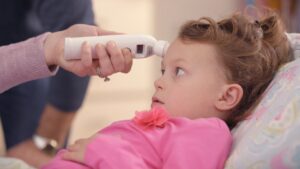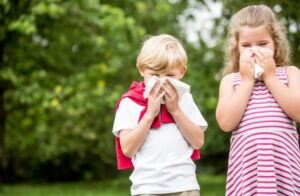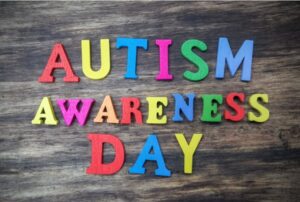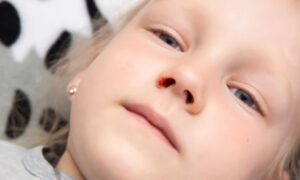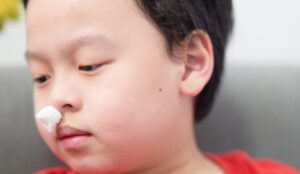When a child has a fever, it can be a source of anxiety and concern for parents. Understanding the different types of fever is important because each type may require different management.
What is Fever?
A normal body temperature for a baby is between 36-37.8°C(96.8 -100.04°F). The average oral temperature is 37°C(98.6 °F). Axillary temperature is typically 0.5-1°C lower than oral temperature, and rectal temperature is usually 0.5-1°C (32.9-33.8°F) higher than oral temperature. However, each baby has their own normal temperature, which can fluctuate by 1-1.5°C(33.8- 34.7°F) throughout the day. A healthy baby's temperature in the morning might be 36°C, but it could rise to 37.8°C(100.04°F) in the evening or after getting upset. Here are the classifications of fever:
- Low-grade fever: Body temperature between 37.2-38.3°C (98.96-100.94°F).
- Moderate fever: Body temperature between 38.4-39.4°C.(101.12 -102.92°F)
- High fever: Body temperature above 39.5°C(103.1°F).
It's a good idea to know your baby's normal temperature. When your baby is feeling well, take their temperature in the morning when they wake up and again in the evening when they are calm. These temperatures will give you an average for your baby. Any temperature above this average is considered a fever.
5 Types of Fever
Infectious Fever: Caused by an infection such as a cold, flu, or sore throat. Children may have other symptoms like coughing, runny nose, or a sore throat. Treatment usually involves plenty of fluids, adequate rest, and sometimes fever-reducing medication.
Viral Fever: Also caused by a viral infection, which could include diseases like hand, foot, and mouth disease, or chickenpox. Besides fever, children may have other symptoms like rashes or mouth ulcers. Treatment is typically aimed at symptom relief and comfort, sometimes requiring medical attention.
Immune Reaction Fever: Occurs when the child's immune system reacts to a stimulus, such as an allergic reaction or a reaction to a vaccination. Treatment is usually directed at the underlying cause of the fever and may include antiallergy medications or other treatments.
Environmental Fever: Caused by exposure to extreme temperatures, which can be resolved once the child is removed from the high or low-temperature environment. Prevention involves ensuring the child is appropriately dressed and taking necessary precautions in extreme temperatures.
Febrile Seizures: In some children, high fever can lead to febrile seizures, which are brief, harmless neurological responses that typically occur when the temperature is above 38.9°C (102°F).
When a child has a fever, parents should monitor their symptoms closely and take appropriate measures based on the type of fever. If the child's temperature continues to rise or is accompanied by severe symptoms such as difficulty breathing or loss of consciousness, prompt medical attention should be sought. Timely medical intervention can help determine the cause of the fever and implement appropriate treatment to ensure the child recovers quickly.
Reference: "The Baby Book" by William Sears, Martha Sears, Robert Sears, and James Sears.




